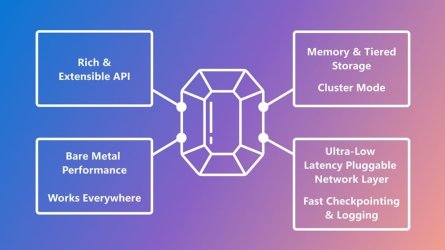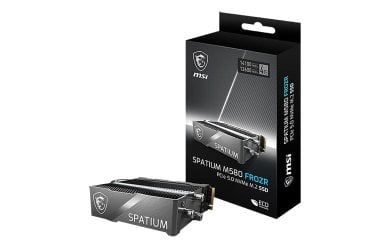Microsoft Research Blog:
Researchers at Microsoft have been working for nearly a decade to address the increasing demand for data storage mechanisms to support the rapid advances in interactive web applications and services. Our new cache-store system called Garnet, which offers several advantages over legacy cache-stores, has been deployed in multiple use cases at Microsoft, such as those in the Windows & Web Experiences Platform, Azure Resource Manager, and Azure Resource Graph, and is now available as an open-source download at https://github.com/microsoft/garnet(opens in new tab). In open sourcing Garnet, we hope to enable the developer community to benefit from its performance gains and capabilities, to build on our work, and to expand the Garnet ecosystem by adding new API calls and features. We also hope that the open sourcing will encourage follow-up academic research and open future collaboration opportunities in this important research area.
The cache-store problem
The growth of cloud and edge computing has brought an increasing number and range of applications and services that need to access, update, and transform data with higher efficiency, lower latencies, and lower costs than ever before. These applications and services often require significant operational spending on storage interactions, making this one of the most expensive and challenging platform areas today. A cache-store software layer, deployed as a separately scalable remote process, can ease these costs and improve application performance. This has fueled a growing cache-store industry, including many open-source systems, such as Redis, Memcached, KeyDB, and Dragonfly.Unlike traditional remote cache-stores, which support a simple get/set interface, modern caches offer rich APIs and feature sets. They support raw strings, analytic data structures such as Hyperloglog, and complex data types such as sorted sets and hash. They allow users to checkpoint and recover the cache, create data shards, maintain replicated copies, and support transactions and custom extensions.
Introducing Garnet
At Microsoft Research, we have been investigating modern key-value database architectures since 2016. Our prior work, the FASTER(opens in new tab) embedded key-value library, which we open-sourced(opens in new tab) in 2018, demonstrated orders-of-magnitude better performance than existing systems, while focusing on the simple single-node in-process key-value model.Starting in 2021, based on requirements from use-cases at Microsoft, we began building a new remote cache-store with all the necessary features to serve as a viable replacement to existing cache-stores. Our challenge was to maintain and enhance the performance benefits that we achieved in our earlier work, but in this more general and realistic network setting.
The result of this effort is Garnet – a new cache-store that offers several unique benefits:
- Garnet adopts the popular RESP wire protocol as a starting point, which makes it possible to use Garnet from unmodified Redis clients available in most programming languages today.
- Garnet offers much better scalability and throughput with many client connections and small batches, leading to cost savings for large apps and services.
- Garnet demonstrates better client latency at the 99th and 99.9th percentiles, which is critical to real-world scenarios.
- Based on the latest .NET technology, Garnet is cross-platform, extensible, and modern. It is designed to be easy to develop for and evolve, without sacrificing performance in the common case. We leveraged the rich library ecosystem of .NET for API breadth, with open opportunities for optimization. Thanks to our careful use of .NET, Garnet achieves state-of-the-art performance on both Linux and Windows.

API features: Garnet supports a wide range of APIs including raw string, analytical, and object operations described earlier. It also implements a cluster mode with sharding, replication, and dynamic key migration. Garnet supports transactions in the form of client-side RESP transactions(opens in new tab) and our own server-side stored procedures in C# and allows users to define custom operations on both raw strings and new object types, all in the convenience of C#, leading to a lower bar for developing custom extensions.
Network, storage, cluster features: Garnet uses a fast and pluggable network layer, enabling future extensions such as leveraging kernel-bypass stacks. It supports secure transport layer security (TLS) communications as well as basic access control. Garnet’s storage layer, called Tsavorite, was forked from OSS FASTER, and includes strong database features such as thread scalability, tiered storage support (memory, SSD, and cloud storage), fast non-blocking checkpointing, recovery, operation logging for durability, multi-key transaction support, and better memory management and reuse. Finally, Garnet supports a cluster mode of operation – more on this later.
Read more:

Garnetâopen-source faster cache-store speeds up applications, services
Garnet is a cache-store system that addresses growing demand for data storage to support interactive web applications and services. Offering several advantages over legacy cache-stores, Garnet is now available as an open-source download.
www.microsoft.com























